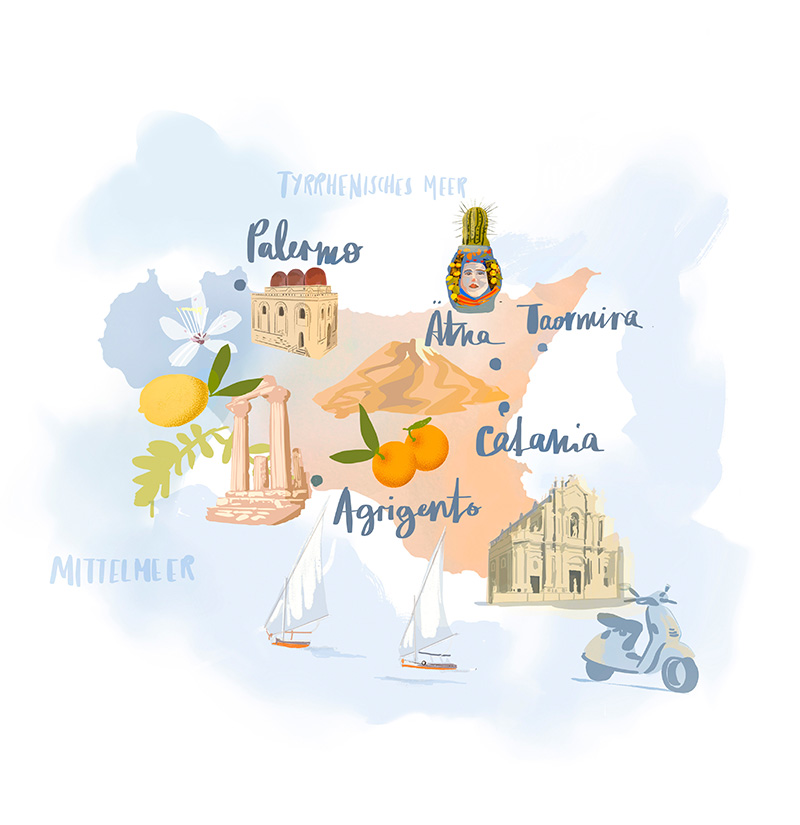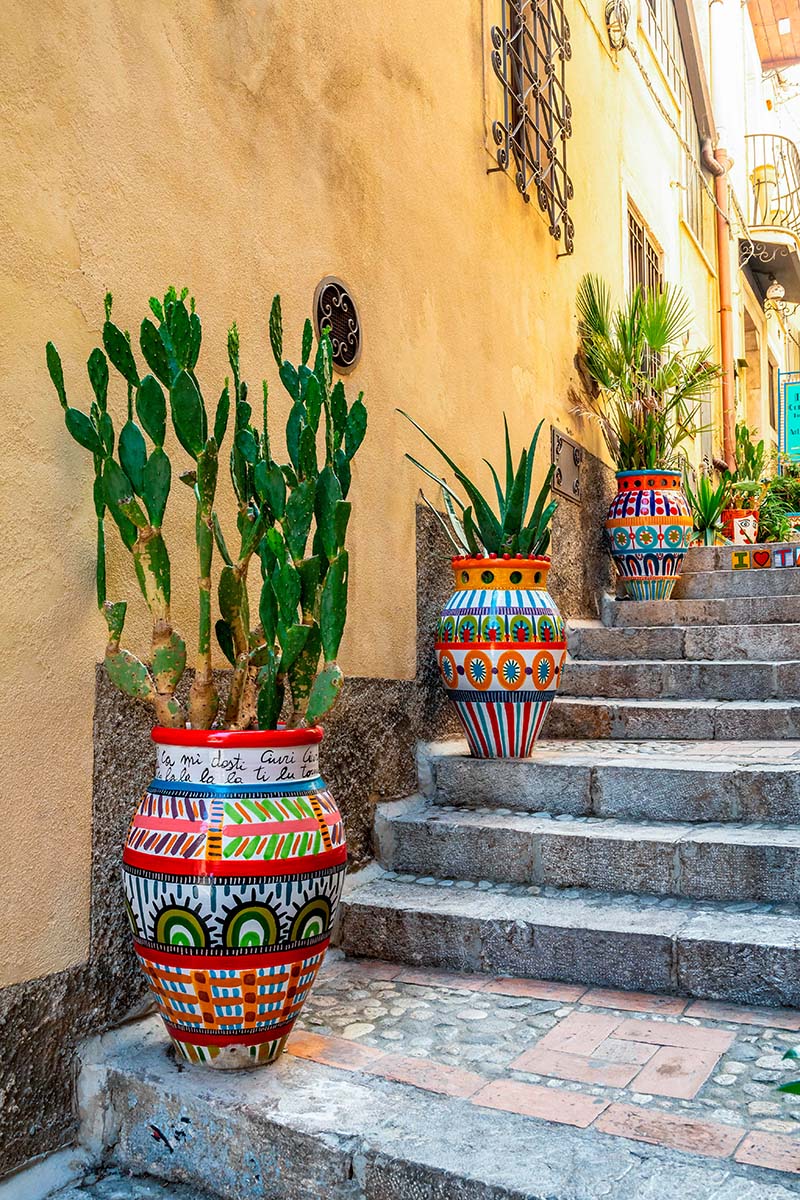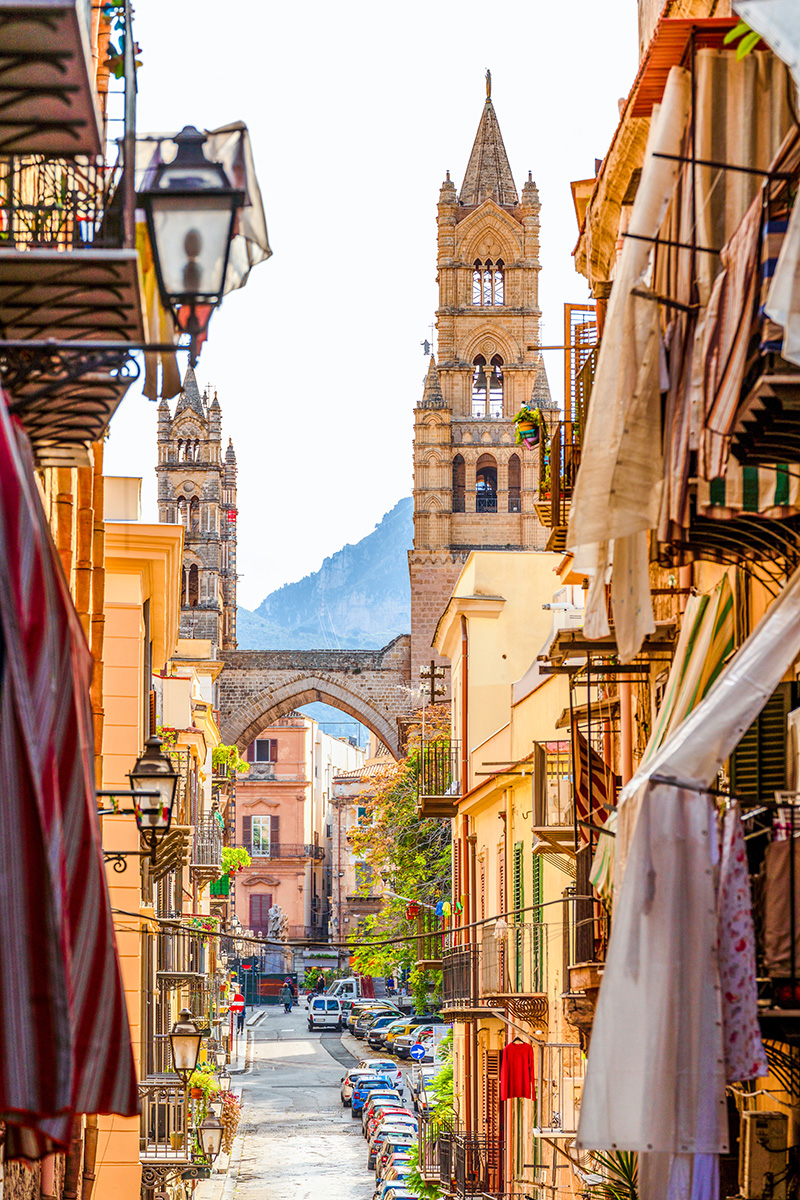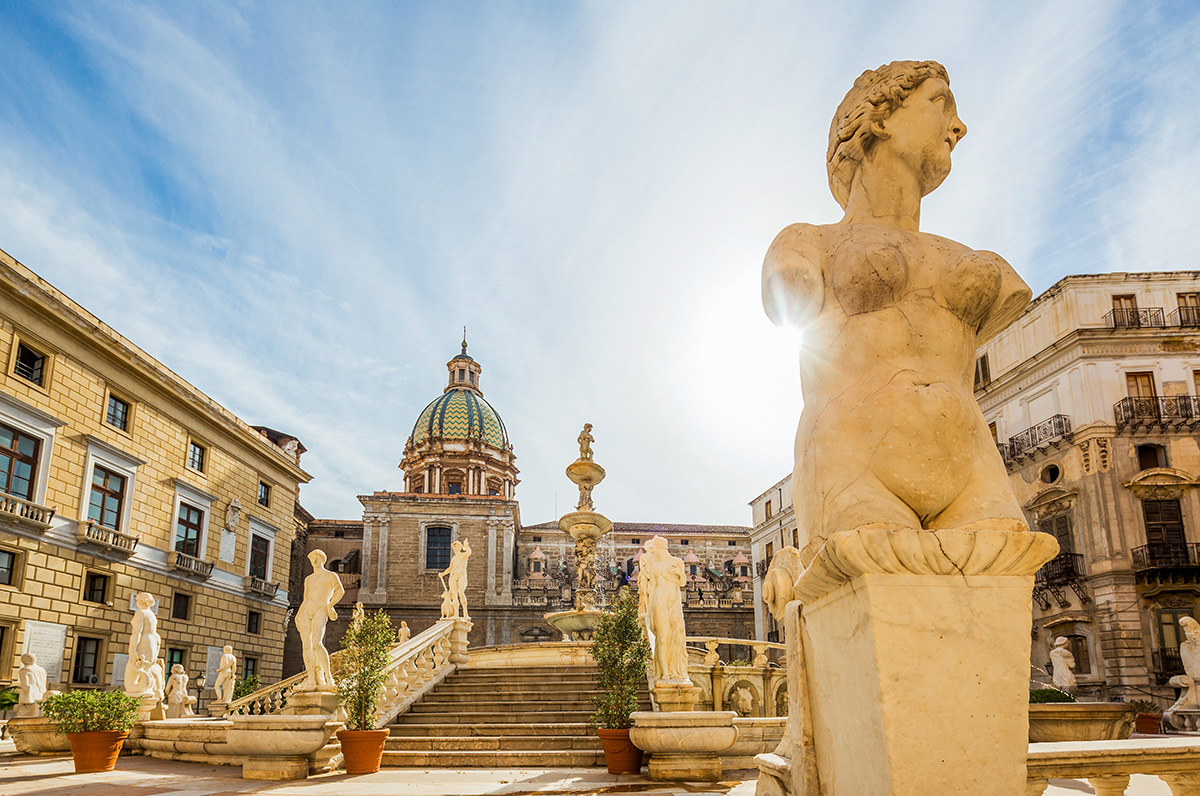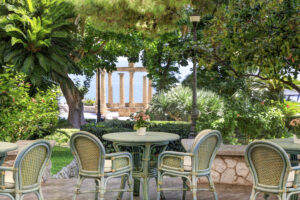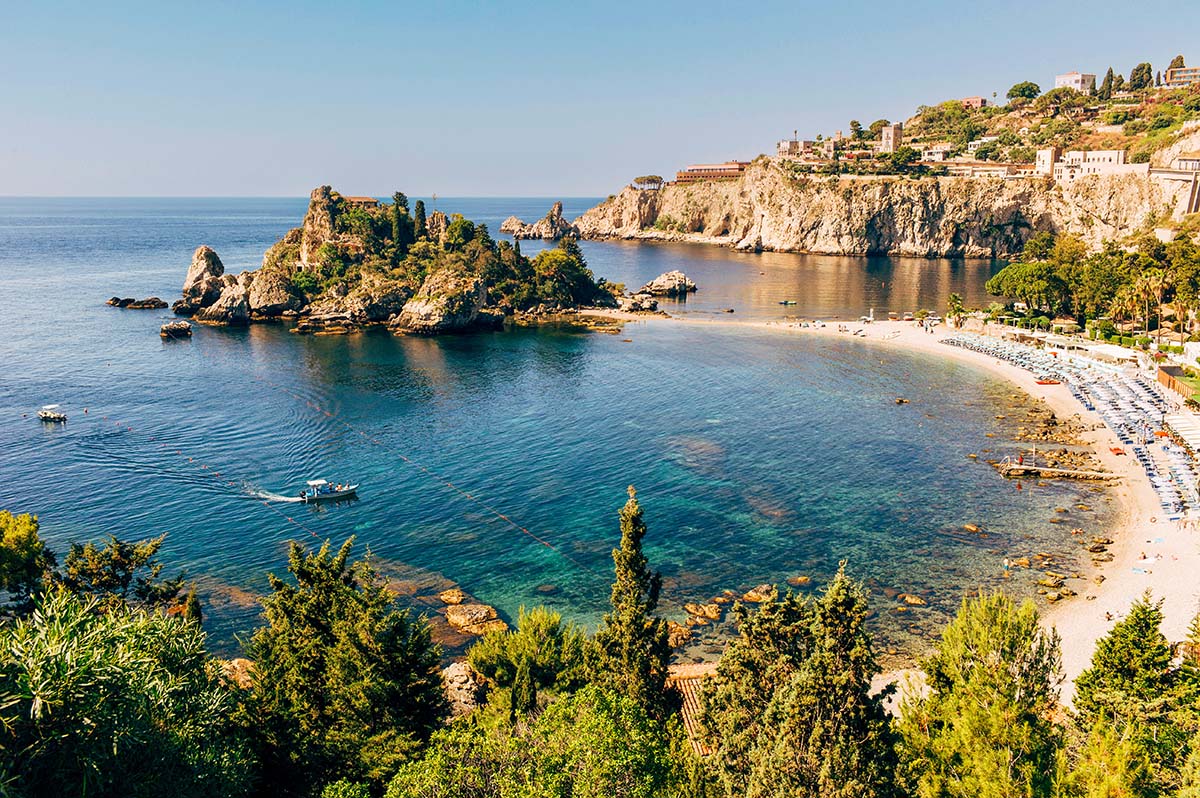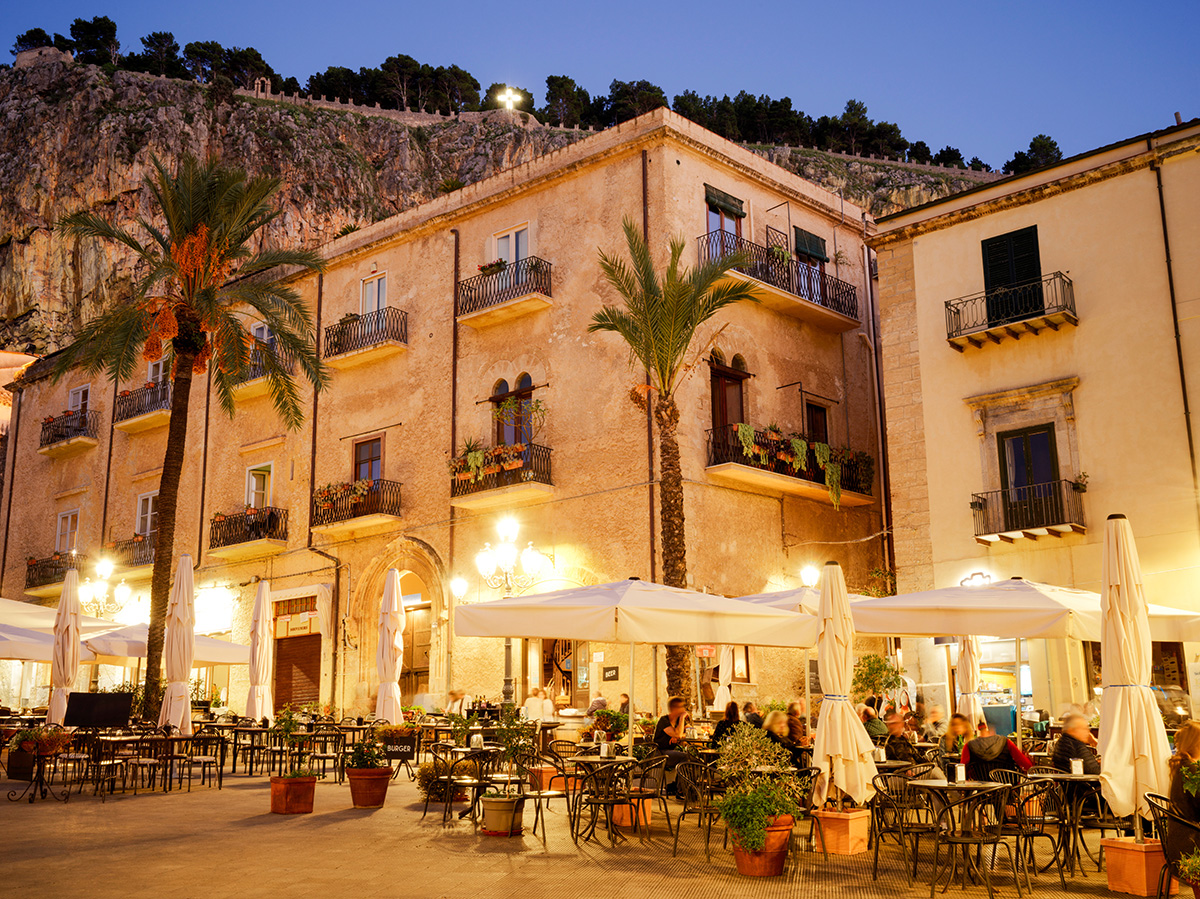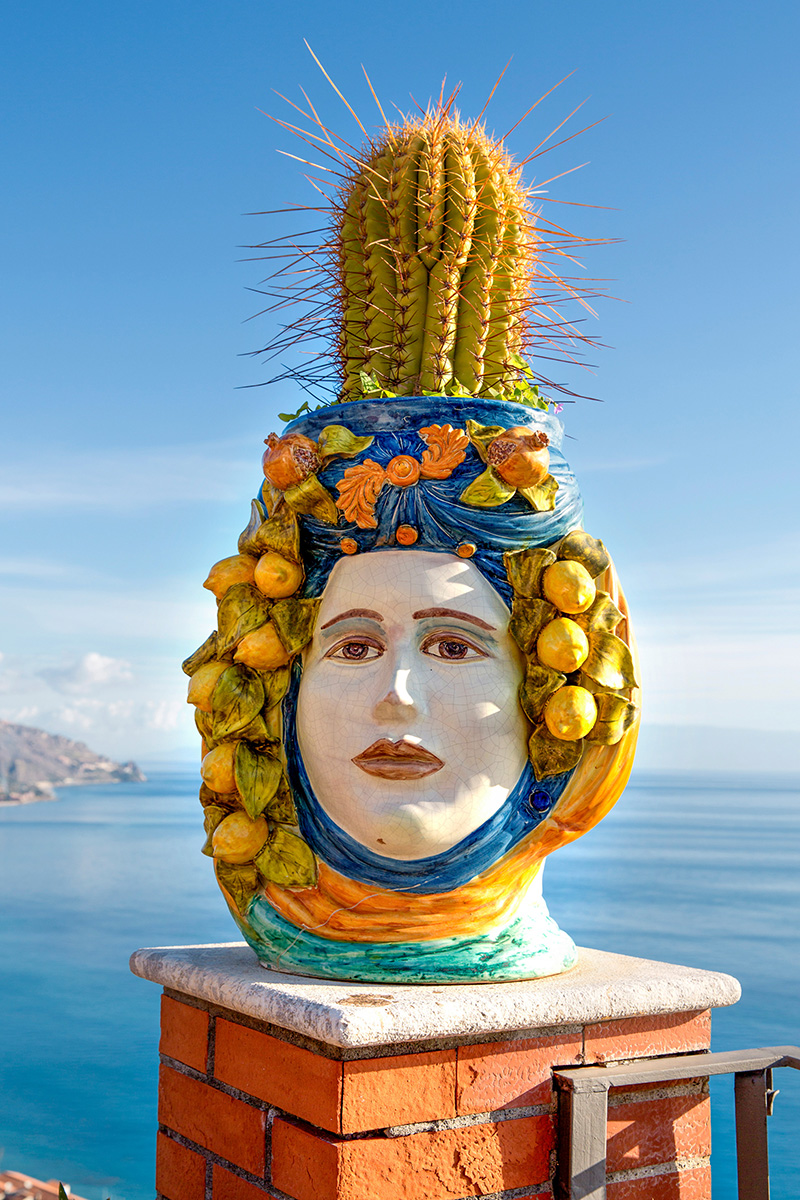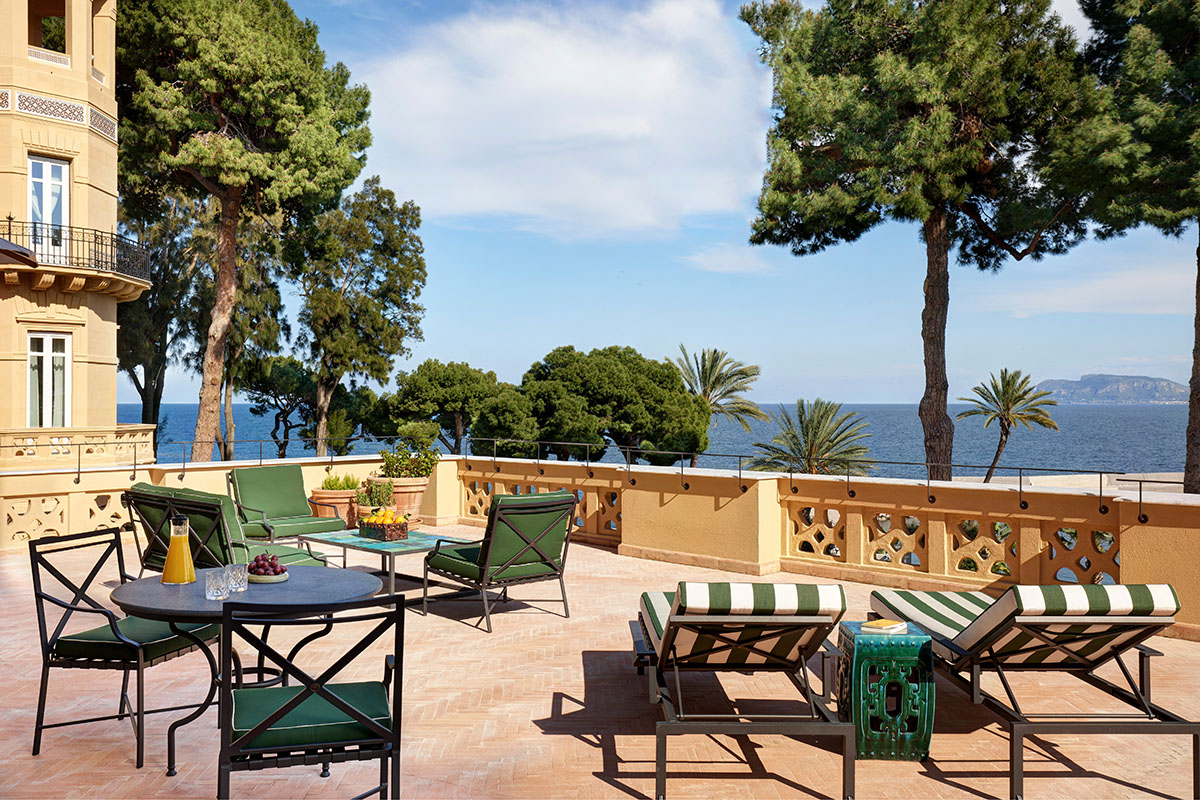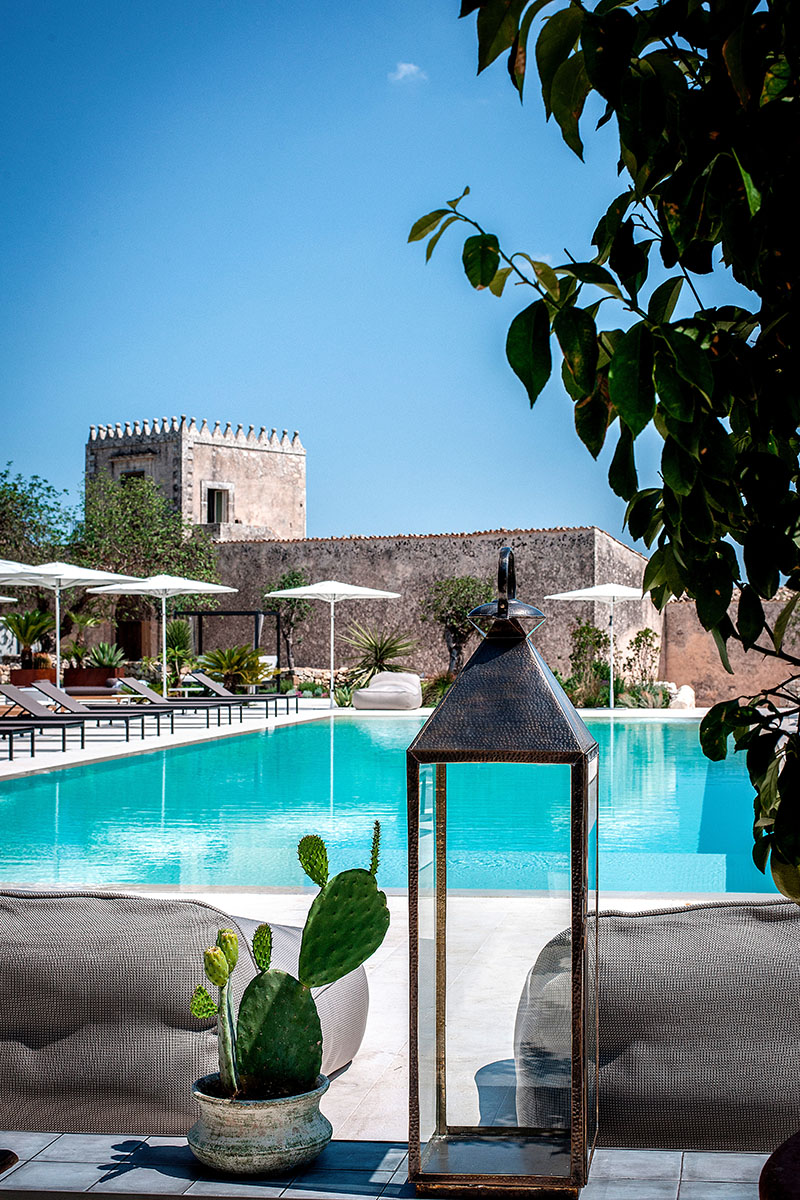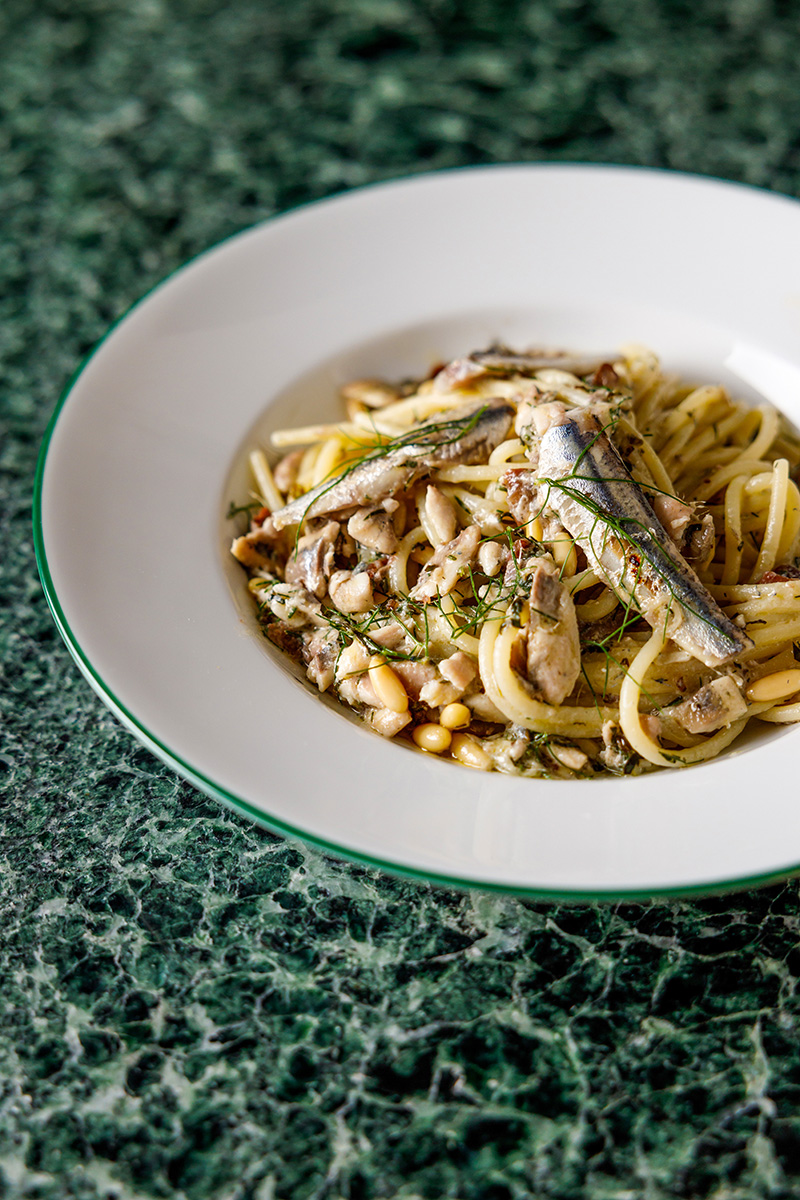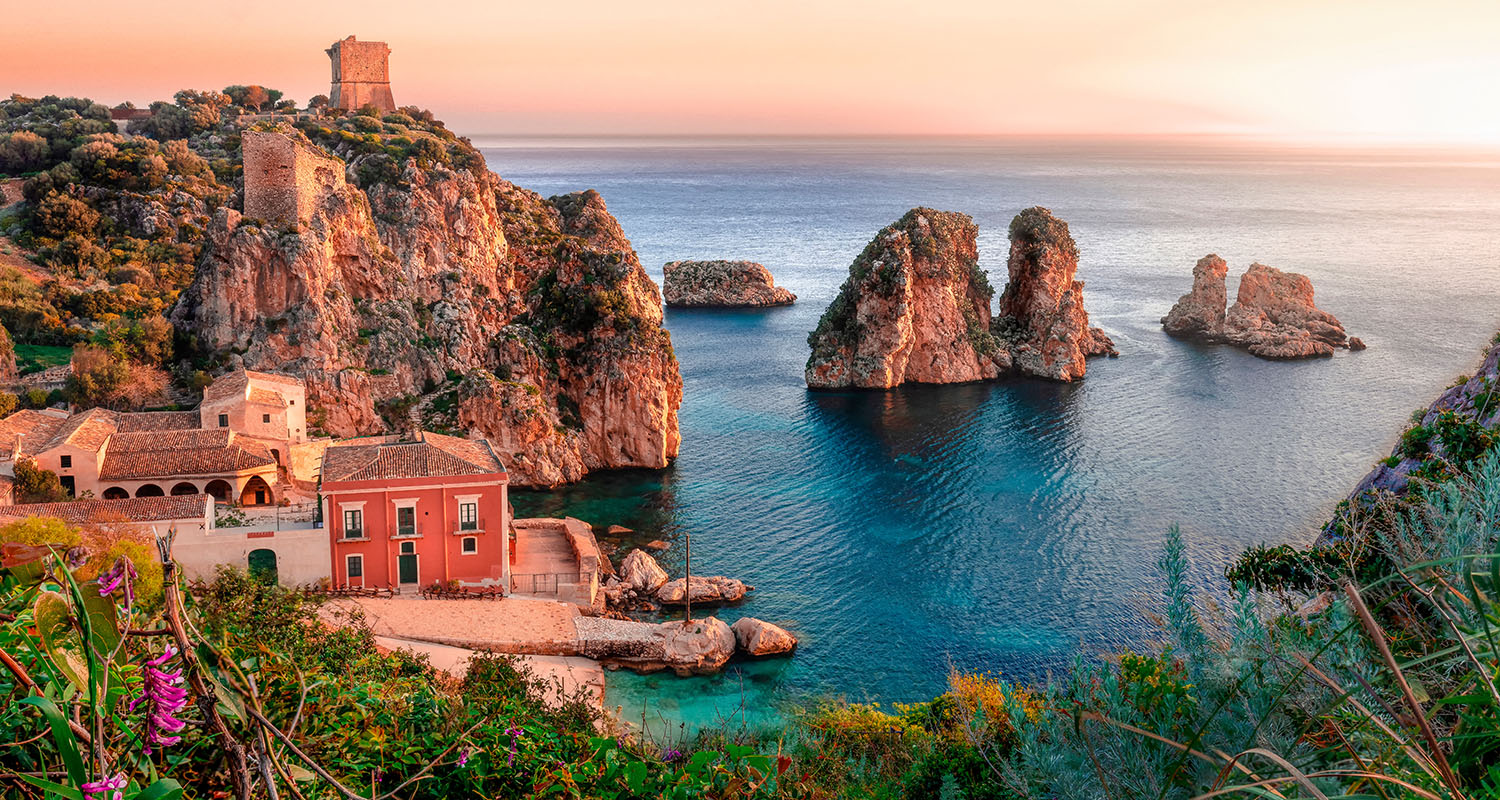
Sicily: Isola Bella
The Mediterranean island with its majestic mountains and hidden bays, ancient temples and baroque cities has been a dream destination for generations. The hype surrounding the TV sensation “The White Lotus” has rekindled the fire and is now putting a spotlight on new hotels that have brought unimagined luxury to the island.
August 17, 2023
© Caroline Seidler
While searching for a location for the hit show “The White Lotus,” the creators had a specific set of requirements in mind: It had to look summery in the early part of the year, offer plenty of scenic options and have a hotel that was big enough to accommodate the entire crew while also being luxurious enough to satisfy the cast. The producers had been thinking about the south of France and Greece – but then a location scout drew their attention to Sicily.
Taormina is one of the most beautiful places in Sicily. One reason could be the picturesque winding alleyways lined with ceramic vases. © Mauritius Images
The producers’ first stop was the "San Domenico Palace" in Taormina on the east coast of Sicily, which enjoys a majestic setting on a rocky promontory overlooking the deep blue Mediterranean. San Domenico Palace was originally a 14th-century Dominican convent and has been a hotel since 1896. It became part of the Four Seasons portfolio in 2021. With two ancient, cloistered courtyards, marble bathrooms in every room and a museum-quality art collection, it proved to be the perfect location for the American social satire. Taormina used to be a popular stopover on the “Grand Tour” undertaken by many European aristocrats, and the San Domenico Palace has hosted many celebrities, from Oscar Wilde to Elizabeth Taylor.
Richly endowed with cathedrals, monuments and ruins, the city of Palermo manages to be fascinating, noisy and entertaining all at the same time. © Getty Images
And today? It's booked up for months in advance. The TV show was the catalyst for an unexpected tourist boom for the hotel – and Sicily. For some, the island has been a sought-after destination for a long time. For others, it has remained in the shadow of Rome, Florence and Milan. There can be no doubt, however, that Sicily is one of Italy’s most exciting destinations, and reminders of the island’s rich history can be found in every town and village. In the narrow streets of Taormina and Syracuse, time seems to stand still; in the ancient sites of Segesta and Selinunte, the past comes alive.
Greek temples and magnificent palazzi
The famous Fontana Pretoria in the center of Palermo's old town. © Getty Images
Sicily is a treasure trove of history. So many different civilizations have left their mark on the island that the cityscapes are a mosaic of many architectural styles – from the Greek temples of Agrigento to the magnificent palazzi of Palermo. You can even spend the night in some of them – in the "Villa Igiea", for example, which hotelier Rocco Forte spent years meticulously refurbishing. The historic art nouveau palazzo overlooking the Gulf of Palermo was originally designed by Ernesto Basile for the influential Florio family. Today, this jewel once again exudes belle époque charm. The rooms and suites have been furnished with artifacts and artworks chosen to reflect the identity of Palermo.
Sandstone vaults, frescoes, marble and ancient columns – the grandeur of the Villa Igiea palazzo has been very well preserved © Dreamstime
Palermo is the commercial and cultural heart of Sicily. Not only is it the home of Italy’s largest opera house, it is also a melting pot of different cultures, with numerous street markets offering a rich variety of art and food. Few Italian cities are as energetic or vibrant as the Sicilian capital, which at times feels like a crossroads between Europe and the Middle East. If you need to put some distance between yourself and the bustle of the city, head for the rooftop terrace of the Seven restaurant, where you can watch the city light up and glow as the sun sets.
The most beautiful beach in Taormina is Isola Bella. © Getty Images
Things are even quieter in the coastal town of Cefalù, which is an hour east of Palermo. Not only does the town have one of the best beaches in Sicily (which is why the beach scenes in “White Lotus” were filmed there), it also has a long and varied history. Founded by the ancient Greeks and occupied by the Romans, it was later conquered by the Saracens and, in the Middle Ages, by the Normans, before finally becoming part of the Kingdom of Italy in 1861. Archaeological and architectural evidence enables us to trace the different chapters in the island’s history. The Lavatoio, a restored washhouse with original washbasins in natural stone and cast-iron gargoyles, for example, offers insight into life in Sicily in the Middle Ages.
The medieval Piazza del Duomo in Cefalù enjoys a charismatic location. © Getty Images
A PLACE FOR ARCHITECTS TO SHINE
Sicilian "Testa di Moro" ceramics. © Lachris77 | Dreamstime.com
Traces of history can also be seen in Noto, a city in the southeast of Sicily. On January 11, 1693, a devastating earthquake obliterated that entire region of the island. The destruction of the town gave architects like Vincenzo Sinatra the chance to realize their vision: No other Sicilian city has as many fine Baroque palaces, churches and cathedrals as Noto. Equally stylish is the "Dimora delle Balze", which nestles in the olive groves and rolling hills of the Iblea Valley not far from Noti. The estate was built in 1886 by Don Salvatore Zocco with tall, crenelated walls around a central courtyard and an imposing turret at the entrance. Although Zocco’s family used the estate mainly as a summer residence, the layout was very carefully planned, with fragrant gardens lined with Byzantine columns, ornate frescoes on the vaulted ceilings, and striking neoclassical detailing on the outside of the buildings.
You’ll find the Rocco Forte Villa Igiea at the foot of Monte Pellegrino facing the Gulf of Palermo © provided
In 2009, the current owners began their quest to transform the noble estate into one of the top hotels on the island. Working closely with designers Stefano Guidotti and Draga Obradovic, they removed layer after layer to reveal the estate’s original character. They incorporated what they discovered into the interior with a keen appreciation for contemporary design and for the warm hospitality that is typical of Sicily. Whether you’re dining in a village trattoria, visiting a festival or striking up a conversation with the locals, you always sense the island’s inherent warmth and love of life.
The Dimora delle Balze boutique hotel is near the beautiful baroque city of Noto. © Andrea Di Lorenzo
On the way home, be sure to take a detour to Caltagirone, a baroque town famous for producing ceramic products for over 1,000 years. This is the creative home of the Teste di Moro ceramic heads, which also featured in “White Lotus.” These have adorned Sicilian balconies and gardens for centuries and are becoming a popular design object in many parts of the world. Legend has it that they were born out of the love affair of a young woman with peach-colored skin and bright blue eyes who lived in Palermo some 1,000 years ago. One day, she met a young Moor who fell madly in love with her. The young woman returned his feelings – until one day she discovered that her lover had a wife and two sons waiting for him back home.
The Sicilian national dish is pasta with sardines. © Andrea di Lorenzo
When he tried to leave Sicily, the beautiful Sicilian woman killed him, cutting off his head, turning it into a vase and planting basil in it. Neighbors were so impressed by the beauty of her creation that they had similar terracotta pots made. This is how the legend of the “Moor’s head” began – a centuries-old tradition that is still supported today. While there are more romantic stories, none quite captures and conveys the essence of Sicilian culture to the world like a ceramic head from Caltagirone.

This article appeared in the Falstaff TRAVEL issue Summer 2023.

